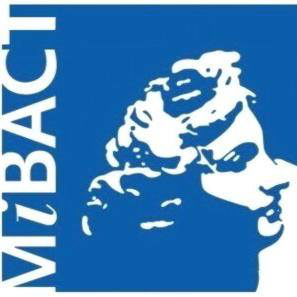Summary (English)
In 2016 a small fieldwork campaign was carried out, limited to the area already opened in previous excavations. Since the new investigations put their focus on the Archaic findings of the site, especially the relation between architectural structures and graves, selected findspots were chosen for a detailed stratigraphical enquiry.
In the area of the so-called hut 1, a structure of apsidally placed massive postholes in the southwestern part of the trenches, further excavation revealed (both by means of small trenches and larger soil removal) that this Archaic structure of 7th century BC date, already uncovered in the previous seasons, was during its use phase probably enlarged by a porch.
It also turned out to have predecessors of earlier date reaching back into the 8th/7th century BC. These are represented directly below the younger structures of hut 1 by deeper and smaller postholes that appeared after the removal of the c. 0.2m thick occupation layer 1096 (in which the younger postholes were dug) in the northern part of hut 1. This layer contained pottery fragments with geometric decoration dated to the 8th/7th century BC.Below this layer, a dense, linear concentration of burnt clay (no. 1183) was found, roughly east-west oriented and consisting of many daub fragments with traces of wattle. This concentration can most likely be addressed as the remains of the wall of an older wooden hut structure (hut 1b). It rested on the occupation layer 1190 containing many charcoal pieces, as well as pottery fragments of similar decoration and date as from the layer above. With this layer can be correlated a number of stone packages (max. diameter 0.3m, max. depth 0.1m), one of which can already securely be identified as a posthole. These can probably be addressed as the remains of an east-west oriented row of postholes, located directly below 1183. Their stratigraphical position securely testifies their affiliation to a hut architecture built earlier than hut 1 on exactly the same spot. It is also likely that these posts were directly connected to 1183, forming the frame on which the daub was attached. Future investigations are needed to clarify the function and exact dating of this structure.
The occupation layer 1190 was also the surface from which the enchytrismos tomb SE 1135 (= tomb 4/14) was interred. The grave was placed immediately adjacent to the postholes of the older hut structure. Another feature related to the older hut 1b is a shallow layer of gravel (SE 1184) discovered slightly southwest of the structure, probably representing a small and spacially limited ground consolidation in the outside activity area of the hut. Probably part of the same occupation layer is a surface that was uncovered directly to the east that was covered by several horizontally placed pottery fragments, most notably the securely intentionally placed rims/lips of two ollae with geometric decoration dating to phase Protodaunian Geometric.
Some findings in this area provided further hints to the existence of earlier structures: the section through posthole 1221/1222 (belonging to hut 1) uncovered parts of an older occupation layer (SE 1227) characterized by a horizontal spread of charcoal fragments in which a pit (SE 1228) filled with stones and wattle was dug. These contexts were covered by a levelling layer of min. 0.25m thickness.
At this stage of investigations, as a working hypothesis the following points can be noted that there are at least 2 pre-Archaic hut phases, one represented by hut 1b that is situated partly under hut 1 and partly further north, predated by the occupation layer 1227.Some 5-10m southeast of the area of hut 1, the investigations of 2016 concentrated on the excavation of further posthole structures already superficially documented in the 2013/2014 campaigns. For the time being, these represent a puzzling picture of multiple postholes that at this stage can be put together to complete hut layouts only in a fragmentary and hypothetical way, further impeded by the lack of clearly affiliated occupation layers that most likely were eroded or removed by later agricultural activities. Their decipherment will be a major task of future investigations planned by the team. The postholes were fully documented and included datable material was recovered. Interestingly, ceramic material (fragments of banded ware pottery) from a number of postholes in this area indicates that wattle-and-daub construction at the site continued well up into the 4th century BC.
North to the posthole area and east of hut 1 a large modern disturbance was identified. Its removal to uncover undisturbed contexts revealed that it was a deep shaft dug by tomb robbers in order to plunder 2 Archaic tombs (tomb 1/16 and 2/16) that were situated in this area in a slightly overlapping way. The analysis of the still recoverable and undisturbed remains allows for some conclusions regarding the original contexts and their dating: Both were pit graves with stone-covered floors and stone alignments along the walls of the chamber carrying large stone slabs as a cover (the remains of these structures were found either still in situ or in the refilled shaft). The younger tomb 1/16 was probably oriented NE-SW and completely robbed. On the floor level of the lower and older tomb 2/16 some relocated skeletal remains of a juvenile or adult individual were recovered, while like in tomb 1/16 nothing was left of the grave goods. The Archaic date of the tombs is nevertheless certain since the stone alignment of tomb 1/16 is located under the Archaic posthole 1164 and the postholes 1202 and 1204 are stratigraphically clearly situated above the occupation layer (containing Protodaunian-Geometric pottery) from which the tombs were dug into the ground. Thus, also this area shows clear signs of a multi-phase history already in the Archaic age.
- Christian Heitz - Università di Innsbruck, Istituto di Archeologia Classica e Provinciale Romana
Director
Team
- L. Obojes
- M. Datterl
- Manuele Laimer - Università di Innsbruck, Istituto di Archeologia Classica e Provinciale Romana
Research Body
- Università di Innsbruck
Funding Body
- ARGE ARCHÄOLOGIE
Images
- No files have been added yet




